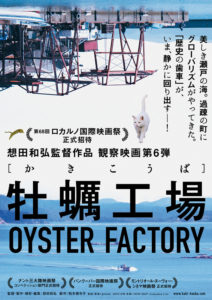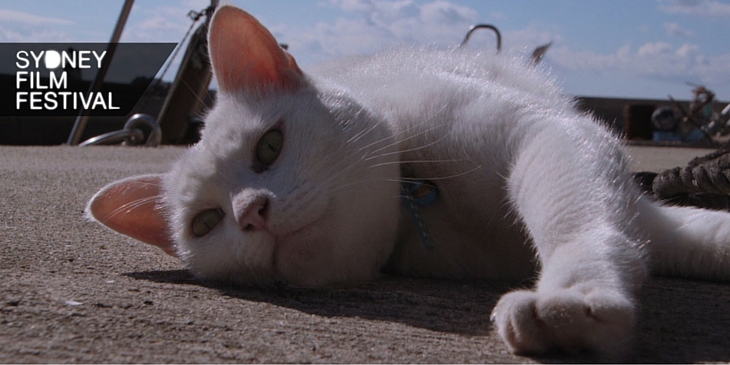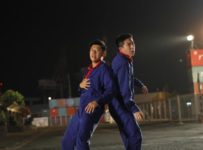 An observational look at life in a small Japanese town, where change is more rapid than the people’s way of life.
An observational look at life in a small Japanese town, where change is more rapid than the people’s way of life.
A lingering shot of a sleeping cat, surrounding by idyllic vistas of the area known as Japan Aegean Sea, belies the tragedy that has fallen Japan since the 2011 tsunami and nuclear accident. Watanabe is one such person who forced to relocate from the affected Miyagi to the small town of Ushimado, where he runs the oyster business for an elderly owner until the latter is ready to retire. Shot in the style of director Kazuhiro Soda’s other documentary films, and simply titled “Observational Film #6” in the opening credits, OYSTER FACTORY follows the local decline in the industry, and the need to hire cheaper Chinese labourers to complete the manual shucking work. The repetitious chronicle of daily life may seem monotonous, but this is the best observation of them all. Indeed, the most drama that the film sees is fishing a man who has fallen into the bay back onto dry land, and even he is smiling benignly the whole time. The observation goes both ways as well, as the subjects mock the cameraman and the subjects at various points throughout the shoot. Comments from interviewees on how the Chinese have a “different way of thinking” never feels like a judgmentally racist remark either, but simply another piece of evidence of how removed this small town is from the bustle of Tokyo. For viewers, even if the world on display is foreign to them, they will feel the inevitability of the change hanging over the people. There are no major revelations or crises to be had by the end, but rather the day’s work comes to an end, flagging a new one to begin. Or as the subjects of the film put it: “The job of the sea is done.”
2015 | Japan, US | DIR: Kazuhiro Soda | DISTRIBUTOR: Sydney Film Festival (AUS) | RUNNING TIME: 145 minutes | RATING: ★★★¾ (7.5/10)




